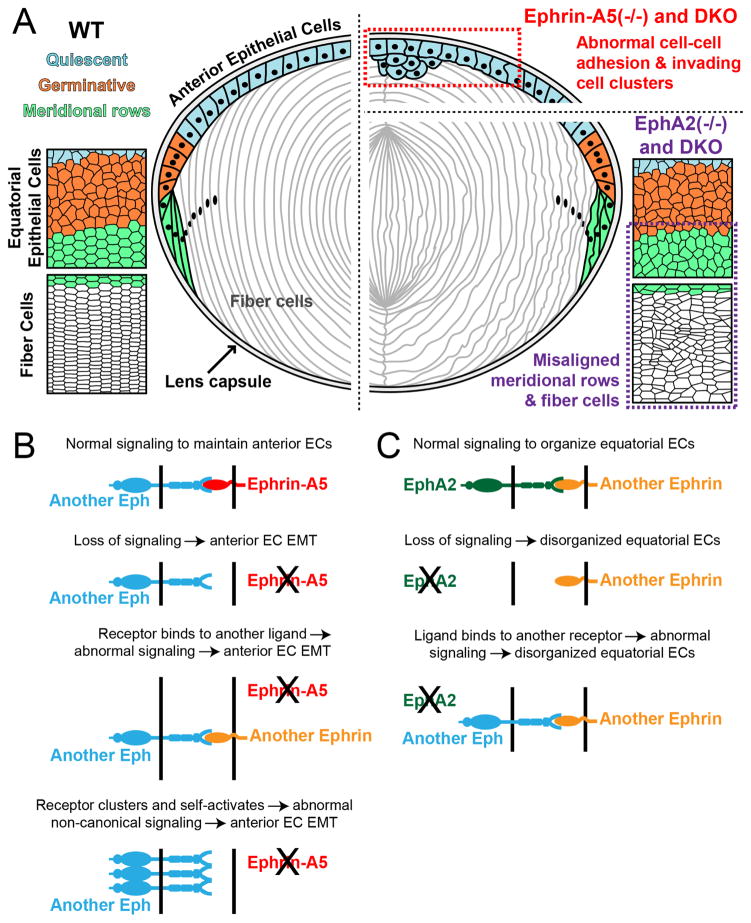Fig. 5.
(A) A summary of the ephrin-A5(−/−), EphA2(−/−) and DKO lens phenotypes. (Left panel) Normal mouse lenses consist of a monolayer of epithelial cells and bulk elongated fiber cells, wrapped by the lens capsule. Anterior epithelial cells (blue) are quiescent. Equatorial epithelial cells undergo proliferation (orange) and transform from a random cell packing organization into meridional rows of hexagonally packed cells (green). Hexagonal fiber cells retain organized rows. (Right panel) Loss of ephrin-A5 in single knockout and DKO lenses leads to abnormal cell-cell adhesion and clusters of anterior epithelial cells that invade into the underlying fiber cell layer (red box). In contrast, EphA2(−/−) and DKO lenses have disorganized meridional rows and fiber cells at the lens equator (purple box). (B) In the absence of ephrin-A5, dysfunction and EMT in anterior epithelial cells (EC) may result from loss of function or abnormal signaling mechanism through an unknown Eph receptor. (C) In EphA2(−/−) lenses, disorganization of equatorial epithelial cells (EC) may result from loss of function or abnormal ligand signaling.

